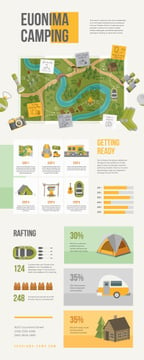An outdoor tents impact is a sheet of light-weight product that is sized to match the flooring of your sanctuary. It secures your outdoor tents from unpleasant things like rocks, sticks and origins, aids maintain your sanctuary tidy of dust, tree sap and various other particles, and marks where to establish camp.
How many can sleep in a 4m bell tent?
Size
Typically made from nylon, polyester or polyurethane, a camping tent footprint is placed underneath the tent when camping or backpacking to prevent abrasive surfaces like sharp branches or rugged rocks from penetrating or jabbing openings in the floor of the tent. Tent footprints are also made to be a smaller sized dimension than the outdoor tents, to make sure that wetness doesn't pool on it and soak through the bottom of the tent. Footprints are available from some suppliers as an equipped alternative that clips to the bottom of the camping tent or in a flexible style that can be cut to the exact dimensions of the outdoor tents.
If you're a skilled hiker or camper, you may have the ability to reduce your very own camping tent footprint out of Tyvek or painter's plastic drop cloths (the kind individuals make use of when paint spaces). This will be cheaper but it will certainly call for accuracy cutting skills and will certainly include additional weight to your pack. One more factor to consider is the denier of the impact-- the higher the denier rating, the thicker and much heavier it will be.
Product
The product of a camping tent footprint is important due to the fact that it can influence the weight, expense and resilience. Ideally, you intend to utilize something like a tarp or DCF (Dyneema Composite Fabric) ground cloth due to the fact that it includes very little weight but is really sturdy and can safeguard the flooring of your camping tent from sharp rocks and other things on the ground.
Tarpaulins are a typical choice, however if you're wanting to conserve money and lighten your pack, you can likewise try making a DIY tent impact out of slim polycro sheet or Tyvek. Just keep in mind that shops usually don't have pre-cut items of these products to cut an outdoor tents impact by size, so you'll require to take additional time and effort to make one on your own. You can likewise check out the denier of the tarp or ground cloth you're taking into consideration to assess its ruggedness; greater scores mean thicker, extra tough fabrics, while reduced numbers suggest lighter, less sturdy products.
Denier
A tent impact is a good investment due to the fact that it will certainly protect your outdoor tents flooring and make it simpler to tidy up and shake out after outdoor camping. Footprints are likewise cheaper to change than your camping tent floor if they wear out, and they aid keep dampness from merging in the bottom of your outdoor tents where it can cause holes or leaks.
Most outdoor tents footprints are made from specialized nylon or polyester fabrics that are after that proofed with silicone or polyurethane. The fabric denier ranking is very important to consider; the greater the denier, the thicker and harder using the footprint will certainly be.
Some tents feature a built-in impact from the producer, and this might be worth considering if weight is an issue for you. Nonetheless, if your outdoor tents is fitted with a tough, high-denier outdoor tents floor then an impact will likely not add much to the convenience of your outdoor camping experience. An impact will, nevertheless, make your tent a lot easier to clean and preserve.
Weight
Tent footprints are an essential accessory for outdoors tents to safeguard the groundsheet from dampness, abrasion and 'deterioration'. It's important to obtain the appropriate sized impact and take into consideration material, durability and cost when picking one.
Footprints are commonly made from a tough, polyester or nylon material covered with water resistant polyurethane. Their density is usually gauged in denier; higher scores are thicker and a lot more durable however additionally heavier.
How do you camp in windy conditions?
They ought to be reduced a couple of inches smaller sized on all sides than the actual rundown of your tent to stay clear of puddling-- if it rains water can merge in the center bell tent and saturate into all-time low of your tent. Various other options for making do it yourself tent impacts include painter's plastic ground cloth (the type you put down prior to painting an area), Tyvek and polycro. The most affordable alternatives are probably silicone- or polyurethane-proofed, yet these are less breathable and can quickly tear. They're also really bulky to load and call for precision reducing skills.
